|
|
Creator | Title | Description | Subject | Date |
| 876 |
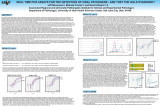 |
Stevenson, Jeff; Procter, Melinda; Hillyard, David R. | Real time PCR assays for the detection of viral pathogens - are they the gold standard? | Over the past decade, PCR testing for infectious agents in the clinical laboratory has begun to replace other methods, such as culture. PCR is often now referred to as the 'gold standard' in this field. Further evolution of this technology has seen the introduction of real time PCR, replacing tradit... | Polymorphism; Target DNA | 2003-11-11 |
| 877 |
 |
Hymas, Weston C.; Hillyard, David R. | Real time RT-PCR assay for norovirus detection with eclipse probes and a non-competitive internal control. | Noroviruses are the major causative agents of nonbacterial gastroenteritis worldwide and are estimated to cause approximately 23 million cases in the United States annually. Real time RT-PCR is rapidly becoming the principle diagnostic means for norovirus detection due to its enhanced sensitivity an... | Gastroenteritis; Eclipse Hybridization Probes; Norovirus | 2005-05-03 |
| 878 |
 |
Francis, Leslie | Recent developments in genetic diagnosis: some ethical and legal implications | This essay outlines some of the ethical complexities genetic technology poses in two areas of decision-making: when to perform genetic testing and what to do with the information gained from genetic testing. | Genetic Technology; Genetic Testing; Ethics | 1986 |
| 879 |
 |
Frederick, Jeanne M.; Baehr, Wolfgang | Receptor for advanced glycation end products and age-related macular degeneration. | Advanced glycation end products (AGE) exacerbate disease progression through two general mechanisms: modifying molecules and forming nondegradable aggregates, thus impairing normal cellular/tissue functions, and altering cellular function directly through receptor-mediated activation. In the present... | Optic Atrophies, Hereditary; Apoptosis; Pigment Epithelium of Eye | 2004 |
| 880 |
 |
Baehr, Wolfgang | Receptors for advanced glycation end products as progressive factors in age-related macular degeneration | Advanced glycation end products (AGE) exacerbate disease progression through two general mechanisms: modifying molecules and forming nondegradable aggregates, thus impairing normal cellular/tissue functions, and altering cellular function directly through receptor-mediated activation. In the prese... | Advanced glycation end products; AGE; receptor for AGE-mediated cellular activation; RAGE | 2004 |
| 881 |
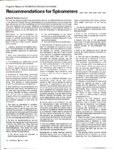 |
Gardner, Reed M. | Recommendations for Spirometry | Biomedical Informatics | | 1978 |
| 882 |
 |
Gardner, Reed M. | Recommendations for Use of Intraflo Flush Valve (Letter) | Biomedical Informatics | | 1978 |
| 883 |
 |
Couldwell, William T. | Recurrent infrasellar clival craniopharyngioma | The patient is a 44-year-old man who underwent resection of a posterior nasopharynx tumor 12 years earlier via left lateral rhinotomy approach. The final pathological analysis indicated the tumor was a craniopharyngioma, and the patient subsequently underwent focal radiation. The patient returned t... | Ectopic Craniopharyngioma; Recurrence; Infrasellar; Clivus | 2007 |
| 884 |
 |
Varner, Michael W.; Hatasaka, Harry H. | Recurrent pregnancy loss. | Recurrent pregnancy loss is a frustrating clinical dilemma for both patients and physicians because, in most cases, causes are nebulous and few treatments with proven benefit can be offered. Involved, expensive tests have frequently been proposed and their use has often filtered into clinical practi... | Recurrent Pregnancy Loss; Uterus/abnormalities; Chromosome Disorders; Abortion, Habitual | 1994-06 |
| 885 |
 |
Varner, Michael W. | Reduction in amniocentesis risks using a real-time needle guide procedure. | Rates of complications associated with a second trimester genetic amniocentesis were studied in 918 patients, and complete infant follow-up was obtained. In 903 singleton pregnancies and 15 twin gestations, the procedure was performed under continuous sector scanning guidance through an attached nee... | Amniocentesis; Ultrasonography; Pregnancy | 2007-01-25 |
| 886 |
 |
Kestle, John R. W. | Reduction of hemorrhage risk after stereotactic radiosurgery for cavernous malformations | The benefits of radiosurgery for cavernous malformations are difficult to assess because of the unclear natural history of this vascular lesion, the inability to image malformation vessels, and the lack of an imaging technique that defines "cure." The authors selected for radiosurgery 47 patients w... | Cavernous malformation; Gamma knife; Stereotactic radiosurgery | 1995 |
| 887 |
 |
Kestle, John R. W. | Reduction of transfusion rates in the surgical correction of sagittal synostosis | Object. As public concern about the risks of blood transfusions increased in the mid-1990s, avoidance of transfusions became a goal of surgery for sagittal synostosis. This study was performed to confirm a hypothesized reduction in transfusion rates in recent years and to identify factors associated... | Sagittal synostosis; Sagittal craniosynostosis; Craniectomy; Allogenic blood transfusion; Reduction | 2002 |
| 888 |
 |
Capecchi, Mario R. | Reexamination of gene targeting frequency as a function of the extent of homology between the targeting vector and the target locus. | Mutations were targeted to the Hprt locus of mouse embryo-derived stem cells by using 22 different sequence replacement and sequence insertion vectors. The targeting frequency was examined at two sites within the Hprt locus as a function of the extent of homology between the targeting vector and the... | Cell Line; DNA Transposable Elements; Embryo; Exons; Mice | 1992-08-12 |
| 889 |
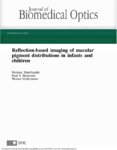 |
Bernstein, Paul S. | Reflection-based imaging of macular pigment distributions in infants and children | We have developed a reflection-based capability of the RetCam® platform, an FDA-cleared pediatric retinal-imaging instrument, for the purpose of measuring macular pigment levels as well as their spatial distributions in infants and children. Our modifications include narrow-band blue-wavelength exc... | | 2013-01-01 |
| 890 |
 |
Sanchez Alvarado, Alejandro | Regeneration and the need for simpler model organisms | The problem of regeneration is fundamentally a problem of tissue homeostasis involving the replacement of cells lost to normal 18 wear and tear 19 (cell turnover), and/or injury. This attribute is of particular significance to organisms possessing relatively long lifespans, as maintenance of all bod... | Molecular Pathways | 2004-05-29 |
| 891 |
 |
Capecchi, Mario R. | Regionally restricted developmental defects resulting from targeted disruption of the mouse homeobox gene hox-1.5. | Gene targeting in mouse embryo-derived stem cells has been used to disrupt the homeobox gene hox-1.5. Mice heterozygous at the hox-1.5 locus appear normal, whereas hox-1.5-/hox-1.5- mice die at or shortly after birth. These homozygotes are athymic, aparathyroid, have reduced thyroid and submaxillary... | Abnormalities, Multiple; Animals, Newborn; Arteries; Bone and Bones; Cartilage; Esophagus; Gene Expression; Heart Defects, Congenital; Organ Specificity; Parathyroid Glands; Pharynx; Thymus Gland; Thyroid Gland; Trachea | 1991-04-11 |
| 892 |
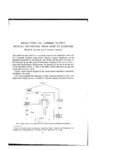 |
Warner, Homer R. | Regulation of Cardiac Output During Transition From Rest to Exercise | Biomedical Informatics | | 1967 |
| 893 |
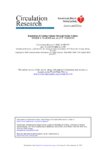 |
Warner, Homer R. | Regulation of Cardiac Output Through Stroke Volume | Biomedical Informatics | | 1960 |
| 894 |
 |
Kestle, John R. W. | Relationship of intraoperative electrophysiological criteria to outcome after selective functional posterior rhizotomy | At British Columbia's Children's Hospital, the criteria used in selective functional posterior rhizotomy (SFPR) evolved in three distinct phases. In Phase 1 the electrophysiological criteria for abnormality included a low threshold to a single stimulation, a sustained response to 50-Hz stimulation, ... | Selective posterior rhizotomy; Electrophysiological criteria; Intraoperative electrical stimulation | 1995 |
| 895 |
 |
Capecchi, Mario R. | Removing the vertebrate-specific TBP N terminus disrupts placental beta2m-dependent interactions with the maternal immune system | Mammalian TBP consists of a 180 amino acid core that is common to all eukaryotes, fused to a vertebrate-specific N-terminal domain. We generated mice having a modified tbp allele, tbp(DeltaN), that produces a version of TBP lacking 111 of the 135 vertebrate-specific amino acids. Most tbp(DeltaN/Delt... | Alleles; Animals, Genetically Modified; Binding Sites; Embryonic and Fetal Development; Evolution, Molecular; Female; Fetus; Immune Tolerance; Male; Mice; Mutation; ATA-Box Binding Protein | 2002-07-12 |
| 896 |
 |
Schmidt, Meic H. | Repeated operations for infiltrative low-grade gliomas without intervening therapy | Progression of infiltrative low-grade gliomas (LGGs) has been reported previously. The limitations of such studies include diverse histological grading systems, intervening therapy, and the lack of histological confirmation of malignant tumor progression. The aim of this study was to determine tumo... | Infiltrative low-grade gliomas; LGG; Tumor progression; Repeated operations; Tumor recurrence | 2003 |
| 897 |
 |
Couldwell, William T. | Resident curriculum guidelines for neurosurgery | This curriculum was created to detail the body of knowledge that should be attained by an individual completing residency training in neurological surgery. The specific structure of resident education in neurological surgery is defined by the American Board of Neurological Surgery, and each program... | Residency training; Neurological surgery | 2000 |
| 898 |
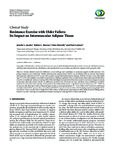 |
LaStayo, Paul C. | Resistance exercise with older fallers: Its impact on intermuscular adipose tissue | Objective. Greater skeletal muscle fat infiltration occurs with age and contributes to numerous negative health outcomes. The primary purpose was to determine whether intermuscular adipose tissue (IMAT) can be influenced by an exercise intervention and if a greater reduction in IMAT occurs with ecce... | | 2014-01-01 |
| 899 |
 |
Dailey, Andrew T. | Resolution of an actinomycotic abscess with nonsurgical treatment: case report | A CASE OF actinomycotic brain abscess is presented. Conservative treatment by prolonged administration of antibiotics after needle biopsy showed complete resolution of the abscess. Previously reported cases suggest that definitive treatment requires excision or open surgical drainage of the abscess... | Actinomycotic abscess; Brain abscess; Actinomyces israelii; Nonsurgical treatment | 1993 |
| 900 |
 |
Couldwell, William T. | Resolution of an anterior-inferior cerebellar artery feeding aneurysm with the treatment of a transverse-sigmoid dural arteriovenous fistula | The authors describe a 27-year old man who developed an unruptured anterior-inferior cerebellar artery feeding aneurysm from a transverse-sigmoid dAVF and its subsequent resolution with the treatment of the dAVF. The patient, with a known history of left transverse and sigmoid sinus thrombosis, pres... | Aneurysms; Dural Arteriovenous Fistulas; Endovascular therapy; Surgery | 2007 |

























